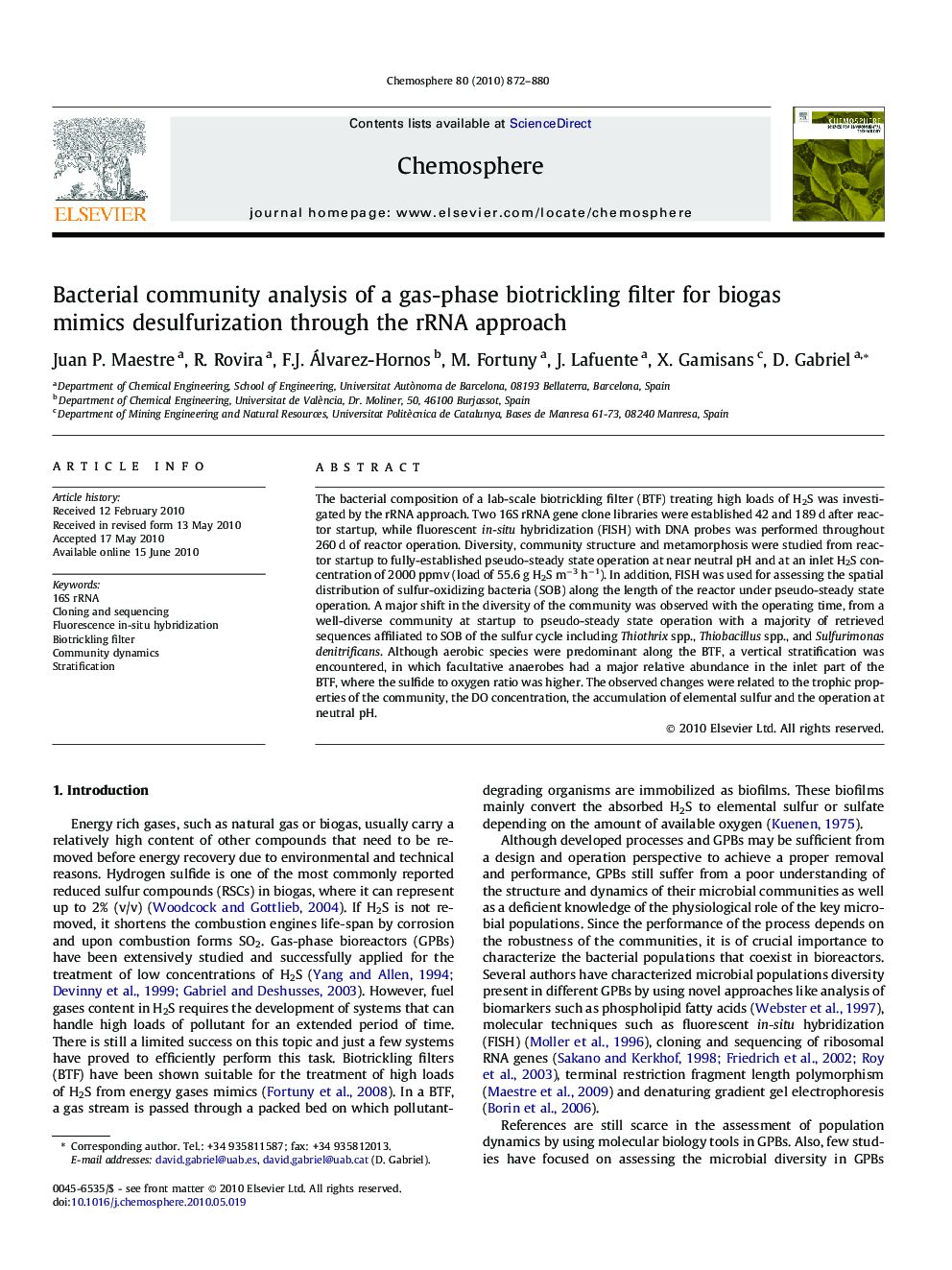| کد مقاله | کد نشریه | سال انتشار | مقاله انگلیسی | نسخه تمام متن |
|---|---|---|---|---|
| 4411562 | 1307599 | 2010 | 9 صفحه PDF | دانلود رایگان |

The bacterial composition of a lab-scale biotrickling filter (BTF) treating high loads of H2S was investigated by the rRNA approach. Two 16S rRNA gene clone libraries were established 42 and 189 d after reactor startup, while fluorescent in-situ hybridization (FISH) with DNA probes was performed throughout 260 d of reactor operation. Diversity, community structure and metamorphosis were studied from reactor startup to fully-established pseudo-steady state operation at near neutral pH and at an inlet H2S concentration of 2000 ppmv (load of 55.6 g H2S m−3 h−1). In addition, FISH was used for assessing the spatial distribution of sulfur-oxidizing bacteria (SOB) along the length of the reactor under pseudo-steady state operation. A major shift in the diversity of the community was observed with the operating time, from a well-diverse community at startup to pseudo-steady state operation with a majority of retrieved sequences affiliated to SOB of the sulfur cycle including Thiothrix spp., Thiobacillus spp., and Sulfurimonas denitrificans. Although aerobic species were predominant along the BTF, a vertical stratification was encountered, in which facultative anaerobes had a major relative abundance in the inlet part of the BTF, where the sulfide to oxygen ratio was higher. The observed changes were related to the trophic properties of the community, the DO concentration, the accumulation of elemental sulfur and the operation at neutral pH.
Journal: Chemosphere - Volume 80, Issue 8, August 2010, Pages 872–880